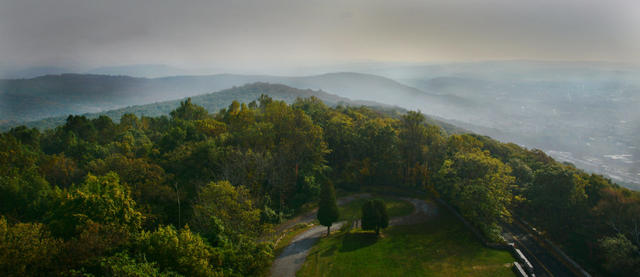Home » Regions » North America » Northern Forests » Atlantic Highlands » Northeastern Highlands » Reading Prong
Reading Prong
Last updated: August 6th, 2020
↑About the Reading Prong
The Reading Prong ecoregion represents the portion of the underlying Reading Prong formation that was not glaciated in the Wisconsin period. It extends from around Reading, PA, east into New Jersey, and consists of several discontinuous pieces.This region has low mountains, ridges, and hills, with abundant rock outcroppings. Elevations are higher and the terrain more rugged than any of the surrounding regions, with steeper, narrower valleys. It consists mostly of metamorphic rock, mostly gneiss, with some quartzite knobs, and some igneous rocks. The weathering of these rocks produces moderately fertile, slightly acidic soils. Covering these substrates is highly weathered, leached drift from pre-Wisconsin glaciation.
The climate here is consistently cooler than that of the lower-altitude surroundings; it is closer to a humid continental climate, contrasting with the humid subtropical climate at lower elevations. Precipitation is also slightly higher, although this factor has less influence on the vegetation than the temperature differential.
This area was originally covered mostly by Appalachian Oak Forest. Rugged upland areas are still mostly forested, but there is significant farmland and residential development in the lower, flatter areas.
This area is bordered to the northwest by the Northern Limestone/Dolomite Valleys, and to the southeast mostly by the Triassic Lowlands, although in a few spots it borders the Trap Rock and Conglomerate Uplands and the Piedmont Limestone/Dolomite Lowlands. To the northeast, the same underlying geologic formation was glaciated, creating the Glaciated Reading Prong and Hudson Highlands region.
 This view from the Reading Pagoda, a distinctive building built on the Reading Prong formation, shows the hilly, forested landscape typical of this region. Photo © Chuck Holland, CC BY-ND 2.0.
This view from the Reading Pagoda, a distinctive building built on the Reading Prong formation, shows the hilly, forested landscape typical of this region. Photo © Chuck Holland, CC BY-ND 2.0.Plant Lists & In-Region Search
We do not yet have data to generate plant lists for a region as fine-tuned as this one. However you can move up to the broader Northeastern Highlands and generate lists for that region: native plants or all plants. Or search that region's plants here:
↑References
1. Woods, A.J., Omernik, J.M., Moran, B.C. "Level III and IV Ecoregions of New Jersey", (2007) Web.
2. Woods, A.J, Omernik, J.M., Brown, D.D. "Level III and IV Ecoregions of Delaware, Maryland, Pennsylvania, Virginia, and West Virginia", U.S. Environmental Protection Agency: National Health and Environmental Effects Research Laboratory, Corvallis, OR (1999) Web.


